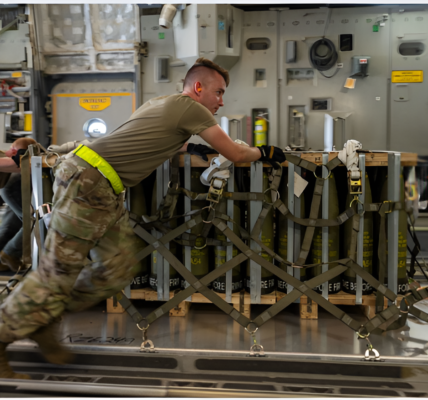
This past summer, I found myself preparing for a mechanized desert war during the Marine Corps’ battalion-level integrated training exercise at Twentynine Palms. The focus this year was squarely on high-intensity conventional warfare — a stark contrast to my 2015 experience, which also involved counterinsurgency tactics. The current emphasis on large-scale combat signals a troubling shift: the Pentagon appears overly fixated on preparing for traditional great-power wars while largely neglecting the counterinsurgency and proxy wars that will likely define future conflicts, especially those involving China.
The 2018 National Defense Strategy rightfully prioritizes great-power competition, with China as the central challenge to American interests. However, the Pentagon’s assumption that the U.S. will engage in a large-scale war with China overlooks the reality of modern conflicts, which will likely be more complex and involve low-intensity operations, proxy wars, and insurgencies. As China seeks to expand its influence globally, it’s not preparing for an all-out conventional war with the U.S.; instead, it is waging proxy conflicts that could destabilize regions where U.S. interests are at stake.
Conventional Warfare: An Increasingly Improbable Scenario
A full-scale war with China would be catastrophic, especially in an age of advanced technologies like hypersonic missiles and cyber warfare, which could lead to mutually assured destruction. Instead of this worst-case scenario, the U.S. faces the more probable threat of Chinese-backed insurgencies and proxy wars that target U.S. interests globally. In these low-intensity conflicts, U.S. forces may be called upon to intervene, assist allies, or manage instability in key regions.
As history has shown, great-power competition typically fuels insurgencies and civil wars. The Cold War exemplified this pattern, where both the U.S. and the Soviet Union backed insurgent movements in regions like Southeast Asia and Latin America. Similarly, as China grows stronger, it will likely support proxies and insurgent groups across Asia, Africa, and even Latin America — undermining U.S. allies and exacerbating global instability.
A Strategic Misstep: The Pentagon’s Aversion to Low-Intensity Conflict
Unfortunately, after nearly two decades of experience in counterinsurgency operations, the Pentagon seems to be regressing. The military is once again avoiding the lessons learned in Vietnam and subsequent counterinsurgency campaigns, which could prove crucial in the emerging era of global instability. The Pentagon’s growing aversion to low-intensity conflict — the very type of conflict the U.S. is most likely to engage in — is a dangerous oversight. As a result, the Army and Marine Corps are shifting focus away from stabilization and peacekeeping, opting instead to prepare for traditional large-scale combat.
Despite the shift toward high-intensity combat training, U.S. forces must not overlook the reality that future military engagements will likely be more complex, requiring small-unit tactics, strategic alliances, and efforts to shape local perceptions. The Pentagon must strike a balance, investing in both conventional deterrence and low-intensity conflict capabilities. The U.S. military needs forces that can thrive in environments where irregular warfare, cultural challenges, and the need for soft skills are paramount.
Preparing for a Low-Intensity Future
China, alongside other adversaries like Russia and Iran, will likely continue to utilize proxies and insurgencies to challenge U.S. global influence. As the Pentagon develops future military capabilities, it must focus on building forces capable of excelling in these messy, complex, and prolonged conflicts. This requires a concerted effort to invest in both high-end combat systems and the smaller, more specialized capabilities necessary for low-intensity operations.
Training must evolve to reflect these needs. Instead of preparing soldiers and marines solely for large-scale desert battles, the Pentagon should rethink training paradigms. Exercises that embed U.S. forces in real-world environments, where they can engage with local partners and counter Chinese-backed insurgents, would be far more beneficial in preparing for the kind of wars most likely to unfold. This training should be conducted in regions where these conflicts are actually happening, allowing military personnel to gain the real-world experience needed to navigate the complex dynamics of modern proxy warfare and insurgency.
The Path Forward
As great-power competition escalates, the U.S. must shift its military strategy to focus on the types of conflicts that will define the future: low-intensity insurgencies and proxy wars. While the potential for high-intensity warfare remains a threat, the reality is that the U.S. military is more likely to face Chinese-backed insurgencies and proxy wars across the globe. Preparing for these scenarios will require a mix of modern technology, cultural acumen, and a deep understanding of irregular warfare.
The U.S. military’s ability to succeed in these conflicts is not impossible. The history of U.S. involvement in counterinsurgencies shows that with the right training, doctrine, and cultural sensitivity, victory is achievable. But to be successful, the Pentagon must stop treating these wars as a lesser form of conflict and instead prepare its forces to excel in the difficult, often chaotic environments where future wars are most likely to take place.
The United States’ global interests depend on a military capable of navigating these complex, low-intensity conflicts. By developing forces that can succeed in these wars, the U.S. will remain a formidable force in the face of China’s expanding influence and proxy warfare strategies. The future of military success may very well depend on how well the U.S. adapts to the challenges of low-intensity conflict.


